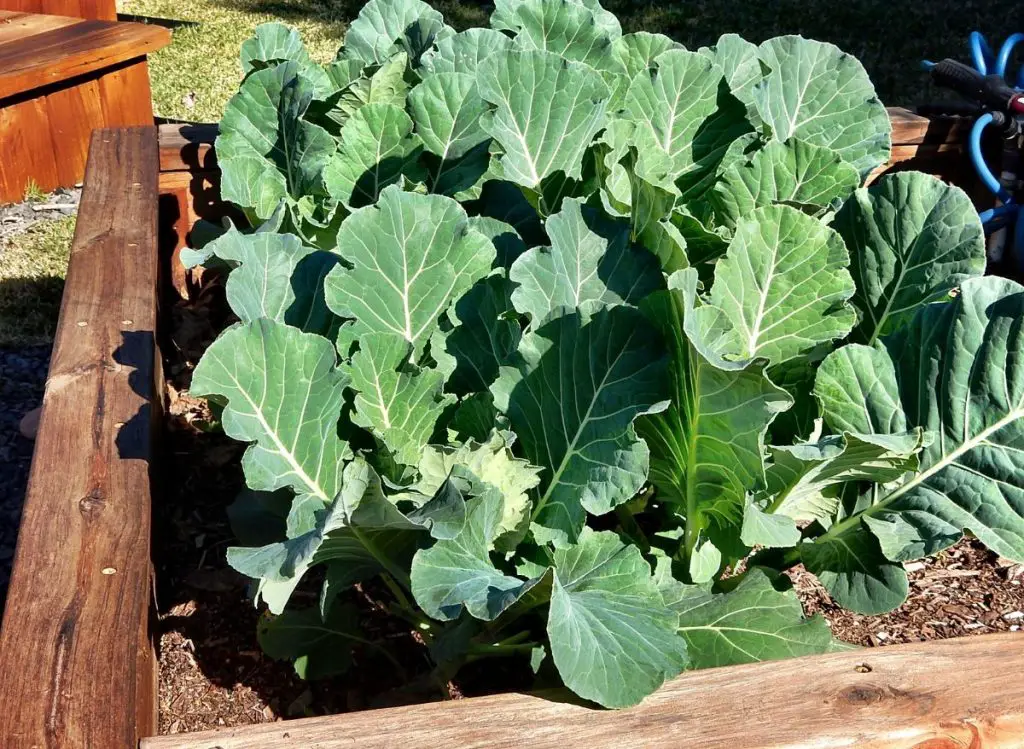
Collards (Brassica oleracea) are among the most favored garden vegetables in the South, particularly in South Carolina.
However, planting collard greens is more challenging because they cannot survive frost or cold weather under 50 degrees Fahrenheit. You must choose the right time; they will die if you plant them outside too early in the spring. And your collard greens won’t give you a generous harvest if you plant them too late.
So, when to plant collards in South Carolina? You can grow collards in South Carolina most of the year. Collards are a cool-season vegetable best grown in July and August for a fall crop. Fall collards often persist throughout the cold during mild winters to produce the next spring abundantly.
Read on to find out everything you need to know about successfully growing planting collards in South Carolina.
You might also enjoy reading: When To Plant Collards In Georgia? (Including tips for growing collards In Georgia)
When To Plant Collards In South Carolina?
The collard is a cool-season vegetable that should be planted during early spring or fall. It is suggested to plant collard in midsummer or early spring for direct seed. And for transplanting, start in early spring or late summer. And generally, matured collard plants resist frosts and light to medium freezes.
Even though collards thrive in warm climates compared to other cabbage family members, they are still regarded as cool-season crops. They typically grow better in early spring and fall at 60 to 65 degrees Fahrenheit.
Direct Seeding
If you choose direct seeding, start planting in the late summer for a fall harvest for optimum results since the soil is much warmer. I also recommend you pick seeds that haven’t been treated with insecticide or fungicide.
Tips For Growing Collard With Direct Seedlings In South Carolina:
- Keep your soil moist when seedlings start growing.
- Place your collard seed in moist soil, generally 0.25 to 0.75 inches (0.64 to 1.91 cm) deep.
- You can add water if your soil needs to be moist enough to improve seeds’ germination.
- Seeds planted deeper than 1 inch (2.54 cm) likely will not germinate, according to Clemson University.
- Planting collard in high temperatures promotes fungal disease and insect pests.
- On the other hand, growing collard in cool temperatures or even in light frost helps improve flavor and produce the most flavorful leaves.
- Soil requirements:
- Collards grow well in various soils with a pH of 6.0 to 6.5.
- For better yields, use heavier loamy soils.
- For early spring crops, choose lighter, well-drained, and sandy soils.
- Ensure that your soil is well-drained and rich in organic matter.
- Watering Requirements:
- If your collards’ eaves become wilted and limp, it is a sign that your soil moisture is insufficient. I suggest you water your soil to provide constant moisture to your collards.
- The best time to water plants is early in the day, allowing the leaves to dry before sundown and keeping your plants healthy.
- Mulching will help you conserve water and reduce weeds.

Collard Transplanting Dates In South Carolina
Collards can be grown both from seed or transplants. Sowing seed is common in the coastal plain, but
For most home gardens, transplanting is the best option for growing collards in South Carolina. You get transplants at most garden centers. However, they might offer a limited selection of collard varieties.
If you want to grow your own transplants, it is recommended to sow seeds in small containers 6 to 8 weeks before transplanting. Collard plants should be spaced 18 inches (45.72 cm) from each other in rows 4 feet apart.
The table below shows collard transplanting dates in South Carolina
| South Carolina Gardening Regions | Locations | Spring | Fall |
| Piedmont | Abbeville Cherokee Anderson Chester Greenville Newberry Edgefield Fairfield Spartanburg Greenwood Lancaster Union Laurens McCormick Oconee Pickens Saluda York counties | March 15th to June 30th | July 15th to September 30th |
| Central | Allendale Aiken Barnwell Bamberg Calhoun Clarendon Chesterfield Dillon Darlington Lexington Florence Kershaw Lee Marlboro Marion Richland Sumter counties Orangeburg | February 15th to June 15th | July 15th to October 15th |
| Coastal | Berkeley Beaufort Colleton Charleston Georgetown Dorchester Horry Hampton Williamsburg counties Jasper | February 1st to June 15th | August 1st to October 30th |

Varieties Of Collard to Try Now
There are two varieties of Collards: loose-leaf and loose-head.
- Hybrid Collard Varieties: High-yield varieties are generally disease-resisting with a high capacity to provide high yield within a very short period.
- Flash is typically a dark-green-leaved collard with vigor, high uniformity, and exceptional yields.
- Open-Pollinated Varieties: Open-pollinated varieties are collards that, if adequately separated from other varieties in the same plant species, will deliver seed that is genetically “true to type,” which means the seed will grow in a plant similar to the parent.
- Vates is one of the most popular types of collard as it produces superior yield, bolt-resistance, and uniformity.
- Champion: Champion derived from Vates; however, it is slower to uniform and bolt.
- Morris Heading: Morris Heading has blue-green broad and waxy leaves with light green veins. Producing a loose head, somewhat similar to Cabbage but with a taller stem. In addition, morris heading is very slow to bolt in heat and grows between 24″ to 36″ tall.
What Collard Variety Should You Choose?
When choosing a collard variety to grow, look for high-yielding types resistant to premature flowering or bolting.
You can pick between smooth-leaved and savoy varieties, which typically come with a curled, wrinkled leaf, and between short compact plants and taller upright collard varieties.
Hybrid collard varieties offer higher yields than open-pollinated varieties.
- If you plan a single harvest, pick hybrid collard varieties because of their consistent growth.
- The open-pollinated varieties are better if you are interested in a continual harvest.
What Are The Different Types Of Collards?
The most common collard greens include Champion, Georgia Southern, Morris Heading, Vates, and Ole Timey Blue.
Georgia Southern collard greens are among home cooks’ most favored collards. You can plant this type in the early spring because their flavor enhances with light frost.
Georgia Southern is easy to care for and takes about 65 days to mature and reach up to 36 inches tall. When it reaches maturity, Georgia Southern has juicy and blue-green leaves excellent for consuming raw, canning, or even freezing.
How Many Days Will It Take To Grow Collard Greens?
On average, it about 60 to 80 days for collards to be ready for harvest after direct seeding.
On average, collards require temperatures of 60 °F to 65 °F to thrive, but they can also withstand the light freezes and frosts accompanying the warmer season.
Collard greens, like other leafy greens, have shallow roots and need less water than other crops. However, it is essential during germination and crop maturation to frequently provide sufficient moisture to assist the plant’s growth.
When To Plant Collard Greens For Fall Harvest?
Collard greens are known to be a cool-season vegetable often grown in late summer to early autumn for winter harvest in South Carolina. However, if you live in northern regions, you can plan collards a little earlier for fall or winter harvest.
Depending on the cultivar, You can extend your collar harvest by breaking off individual leaves beginning from the bottom of the plant and moving up over time.
What to read next:
- What To Plant With Tomatoes In Raised Bed: 23 Best Tomato Companion Plants.
- Best Ways To Prepare Soil For Planting Vegetables.
- Bush Beans Vs. Pole Beans: How They Differ And Which One Is Better?
Wrapping Up
Collard greens are among the healthiest and most nutritious side dishes in American cooking. They are an excellent pairing to chicken, seafood, and rice and have a mild yet savory flavor.
Planting collard greens in South Carolina has a long tradition and will be an amazing addition to your garden.

